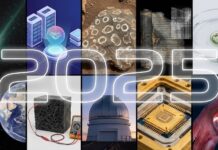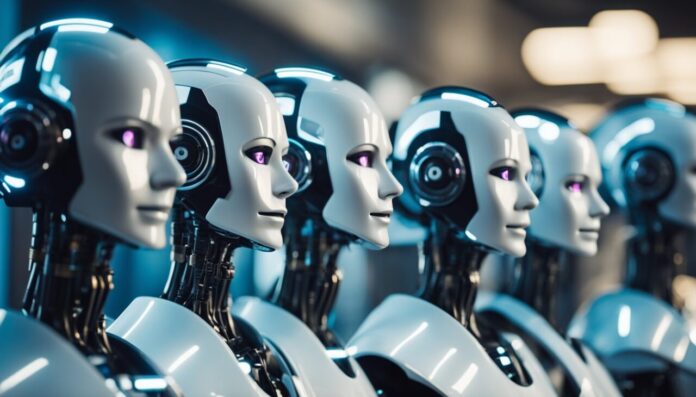
Humanoid robots are among us, becoming increasingly intelligent and advanced with each passing day.
On one hand, the thought of this is terrifying, but at the same time, it’s also breathtaking.
Namely, it’s not difficult to predict that in about 50 years, humanoid robots will be walking among us. Initially, we’ll only use them as various assistants at home, but very soon, we’ll also see them out on the streets.
Today, we already have many different robots helping us around the house. The first that comes to mind are various vacuum cleaner robots.
However, the robots we’ll be discussing in this article are something entirely different. They already partly resemble humans, can hold conversations, and move in incredible ways. They can even display various facial expressions.
And while all of that sounds fine and dandy, there are also potential dangers from such advanced technology (robots).
Check out our article “What impact will sex robots have on humanity“, and you’ll see that there are many potential consequences for society.
But, we’re not talking here about scenes from the movie Terminator; rather, we’re thinking about a more subtle, gradual but significant impact on society.
So join us in this article where we briefly explore the evolution of humanoid robots, their technology, and then we’ll introduce the top 5 best and most advanced humanoid robots that currently exist.
Interesting fact: Sophia was the first robot to be granted citizenship by a country, Saudi Arabia, in 2017.
Evolution of Humanoid Robotics
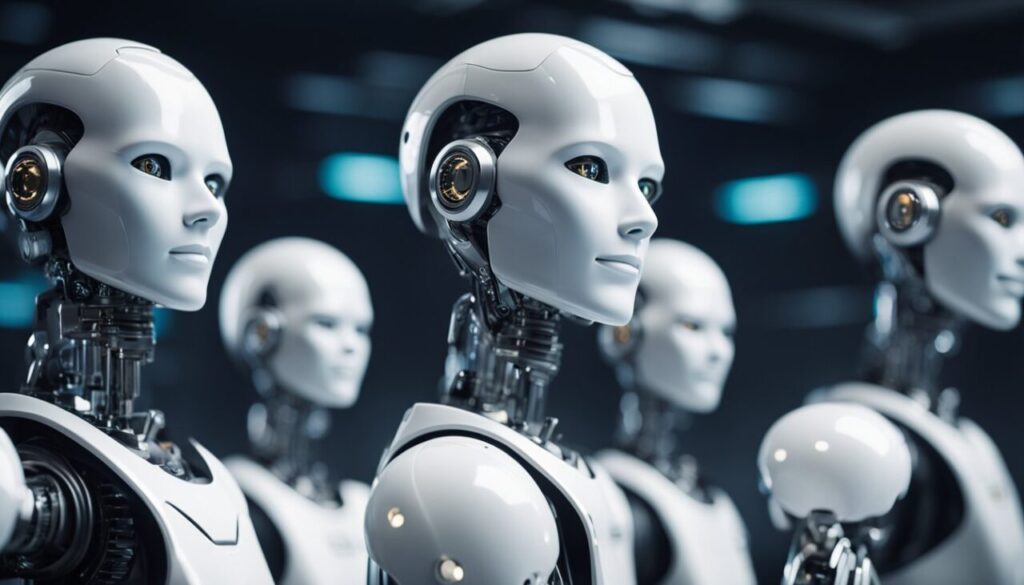
Historical Milestones
Humanoid robots have been a great appeal for people for decades. The first industrial robot, called the “Unimate,” was developed by George Devol in 1954.
It was a large robotic arm used for industrial purposes.
Then in 1972, Waseda University in Japan developed the “WABOT-1,” the first full-scale anthropomorphic (humanlike) robot.
Since then, the field of humanoid robotics has seen significant progress.
One of the most important milestones in humanoid robotics was the development of the “ASIMO” robot by Honda in 2000.
ASIMO was the first robot to walk on two legs and was designed to operate in a human environment.
Another milestone was the development of the “Atlas” robot by Boston Dynamics in 2013, which was capable of performing complex tasks such as opening doors and walking on uneven terrain.
However, those robots were only equipped to handle relatively simple tasks.
It wasn’t until substantial advancements in artificial intelligence that we began to witness the emergence of something far more sophisticated.
Technological Advancements

Recent advancements in technology have allowed for significant progress in humanoid robotics. One of the most significant advancements has been in the field of artificial intelligence (AI).
AI has allowed robots to learn and adapt to their environment, making them more capable of performing complex tasks.
Another significant advancement has been the development of soft robotics, which uses flexible materials to create robots that can move more like humans. Soft robots are more adaptable and can work more safely alongside humans.
Interesting fact: Some humanoid robots can recognize and mimic human facial expressions with up to 90% accuracy.
Design and Aesthetics of Modern Humanoids
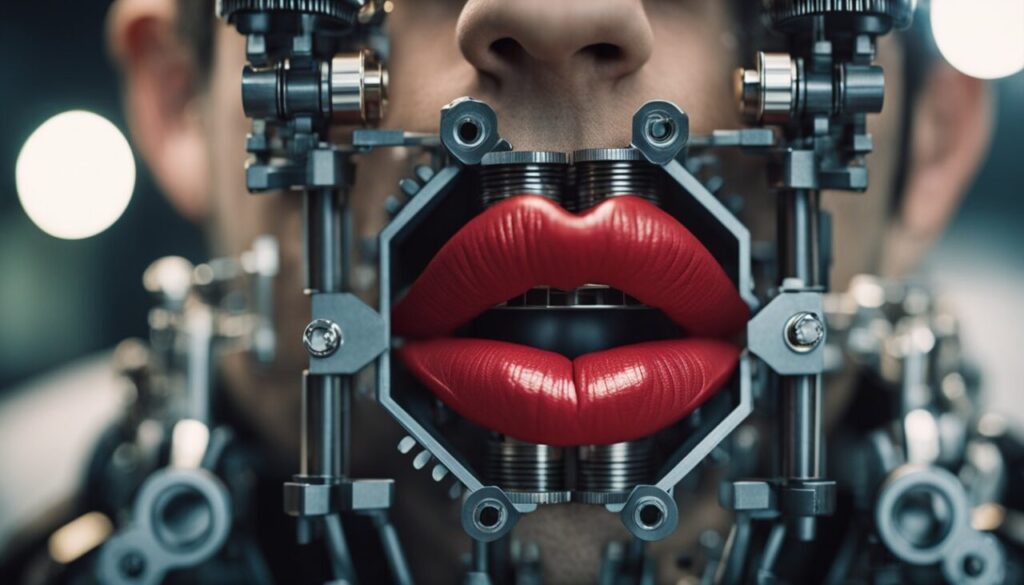
Material Innovations
One of the most significant advancements in the design of modern humanoid robots is the use of advanced materials. These materials are chosen for their durability, lightweight, and flexibility, making them ideal for use in robotics.
The use of carbon fiber, for instance, has allowed for the creation of robots that are strong and lightweight, making them capable of performing complex tasks with ease.
Other materials such as silicon and rubber have also been used to create robots that can move and interact with their environment in a more human-like manner.
Interesting fact: Carbon fiber is five times stronger than steel, but weighs about two-thirds less.
Human-Like Features
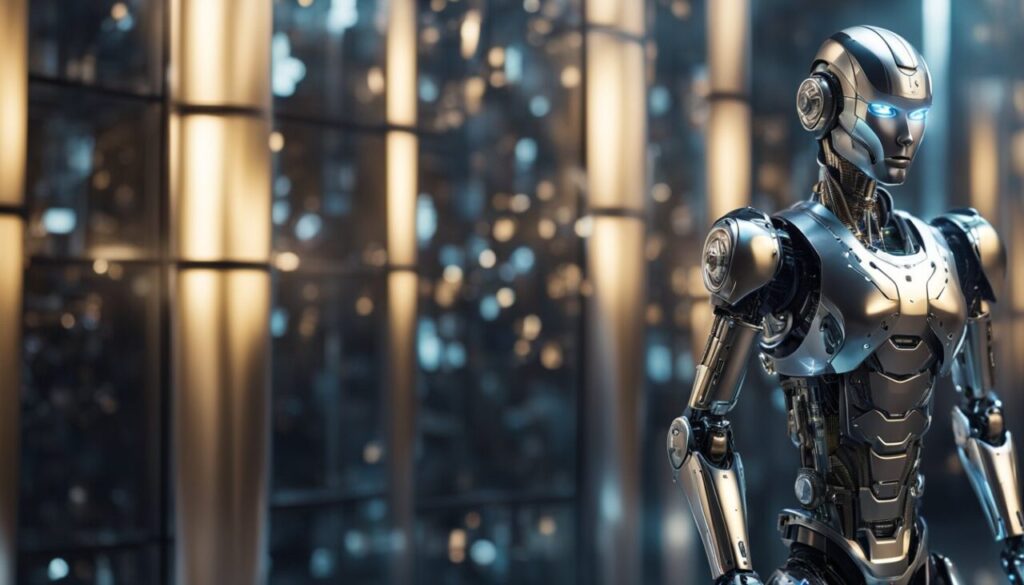
Another key aspect of modern humanoid robots is their human-like features. From their facial expressions to their body movements, these robots are designed to mimic human behavior as closely as possible.
This is achieved through the use of advanced sensors, actuators, and algorithms that allow the robots to perceive and respond to their environment in a more human-like way.
For instance, some robots are designed to recognize and respond to human emotions, while others are capable of performing complex tasks such as walking and running.
Overall, the design and aesthetics of modern humanoid robots have come a long way in recent years.
With advancements in materials and technology, these robots are becoming more human-like in their appearance and behavior, making them increasingly useful in a wide range of applications.
And so, with that brief introduction and history of humanoid robots, let’s explore the top 5 most advanced.
Top 5 Humanoid Robots
Figure 01
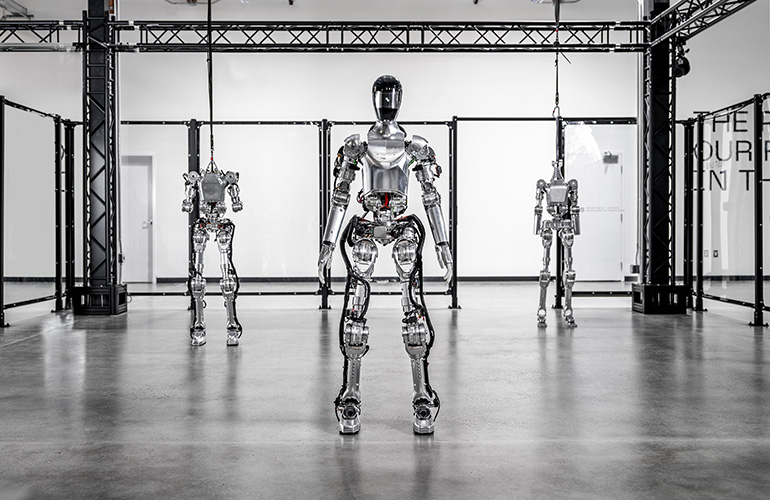
Figure 01 is a humanoid robot developed by Hanson Robotics. It has a realistic human-like face with advanced artificial intelligence capabilities.
Figure 01 is capable of making facial expressions and can naturally interact with humans.
It has been designed to perform a variety of tasks, including customer service, education, and healthcare.
This robot really has some exceptional capabilities.
Here are some of them:
- Dexterity and manipulation capabilities: Figure 01 has hands with four fingers and an opposable thumb, allowing it to manipulate objects with precision, from delicate tasks requiring a gentle touch to those needing firm grasps.
- Whole body reasoning and natural movement: Figure 01 uses “whole body reasoning” to achieve a natural arm swing and regulate angular momentum in its torso and pelvis motion. This allows for more natural and fluid movement compared to traditional robotic motion.
- Torque-controlled walking: Figure 01 uses torque-controlled walking, which tells the robot what torque to apply at its joints instead of where or how fast it is going. This helps the robot navigate the real world, especially when working with people and performing business functions, as it can adapt to disturbances and changes in ground height.
- Cutting-edge AI and language capabilities: Figure 01 is powered by a specialized AI model tailored by OpenAI that combines the linguistic prowess of GPT, the visual acuity of Dolly, and the dynamic interpretation of Sora. This allows the robot to process and reason from language and visual input simultaneously, enabling natural conversation and interaction.
- Slim and efficient design: Despite its human-like capabilities, Figure 01 has a slim form factor designed to work in spaces meant for humans. It stands 5’6″ tall, weighs 60 kg, can carry a 20 kg payload, and walk for 5 hours on a single charge.
Amazing huh?
Atlas
Atlas is a humanoid robot developed by Boston Dynamics. It stands at 6 feet tall and has a range of motion that is similar to that of a human.
Atlas is designed for search and rescue operations and can navigate through difficult terrain. It is equipped with sensors that allow it to detect obstacles and avoid them.
Atlas is another exceptional robot and here are its (his, hers?) top 5 features:
- Vision Systems: Atlas features two vision systems—a laser rangefinder and stereo cameras—both managed by an off-board computer, significantly enhancing its perception capabilities.
- Fine Motor Skills: Equipped with hands that possess fine motor skills, Atlas can manipulate objects with precision and perform delicate tasks.
- Whole-Body Dynamic Stabilization: Atlas can maintain its balance when jostled or pushed, and it can get up if it falls over, demonstrating advanced stabilization capabilities.
- Agility and Movement: Capable of navigating rough terrain, climbing independently, and performing tasks like running, jumping, and even backflips, Atlas exhibits impressive agility and dynamic movement.
- Strength and Flexibility: The fully electric version of Atlas boasts greater strength, an expanded range of motion, and the ability to move beyond the human range of motion, highlighting significant advancements in strength and flexibility.
Those characteristics really resemble humans huh?
Sophia
Sophia is famus humanoid robot developed by Hanson Robotics. It has a human-like face and can make a range of facial expressions.
Sophia is capable of holding conversations with humans and has been designed to learn and adapt to new situations. It has been used for a variety of tasks, including customer service and education.
Out of all robots on this list Sophia is probably the most human-like.
Here are some of her most interesting aspects:
- Lifelike Expressions: Sophia can replicate human emotional expressions through realistic facial movements, enhancing her interactions with people.
- Communication Skills: A standout feature of Sophia is her ability to communicate using natural language. She leverages machine learning algorithms to analyze and understand human speech, allowing her to engage in conversations, answer questions, make jokes, and tell stories.
- Learning Capabilities: Sophia is designed to learn from her interactions and experiences, utilizing artificial intelligence and machine learning to adapt to new situations and enhance her abilities. She is connected to the Sophia Intelligence Collective (SIC), which integrates true AI with human input.
- Public Appearances: Sophia has made numerous public appearances, including interviews with journalists, discussions with politicians, and stage performances. She was granted citizenship in Saudi Arabia and was named the United Nations Development Programme’s first Innovative Champion in 2017.
- Sophia’s Emotional Intelligence: Sophia’s AI includes algorithms that allow her to recognize and respond to emotional cues in human speech and facial expressions. This ability to perceive and react to emotions makes her interactions more natural and engaging.
Robonaut 2
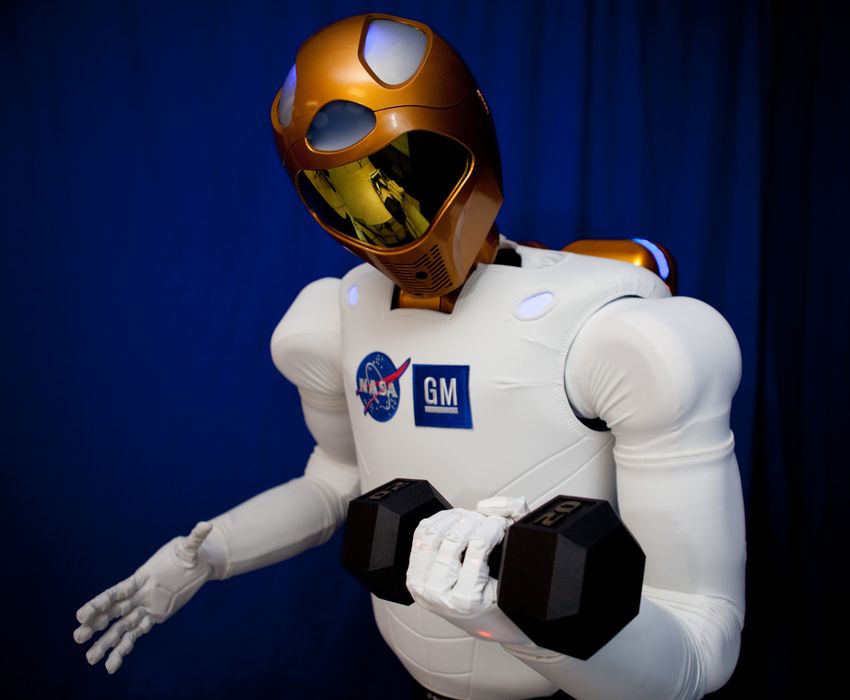
Robonaut 2 is a humanoid robot developed by NASA. It was designed to assist astronauts on the International Space Station (ISS).
Robonaut 2 is capable of performing a variety of tasks, including maintenance and repairs on the ISS. It has a high degree of dexterity and can operate tools and equipment designed for humans.
Here are 5 most interesting features of Robonaut 2:
- Dexterous Hands: Robonaut 2 has highly dexterous hands with fingers and thumbs that can manipulate tools and perform intricate tasks. Each hand has 12 degrees of freedom, allowing for a wide range of movements similar to human hands. This dexterity enables R2 to use the same tools and equipment designed for astronauts.
- Enhanced Vision System: R2 is equipped with a sophisticated vision system comprising multiple cameras and sensors. These include stereo vision cameras that provide depth perception and allow the robot to understand its environment in three dimensions. The vision system enables R2 to identify objects, navigate spaces, and perform tasks with precision. It also allows for teleoperation, where human operators can control the robot remotely, seeing through its ‘eyes’.
- Human-Robot Interaction: Designed to work closely with humans, Robonaut 2 has features that facilitate safe and efficient interaction. Its torso is equipped with multiple sensors and compliant joints, allowing it to sense and avoid collisions with humans. R2 can interpret human gestures and commands, making it an intuitive partner in various tasks.
- Modularity and Upgradability: R2’s design emphasizes modularity, enabling easy upgrades and adaptations. Its components, such as the arms, torso, and hands, can be swapped out or upgraded as new technology becomes available. This modularity extends to its software, allowing for updates and enhancements in functionality. This feature ensures that R2 can evolve with advancing technology and remain relevant for future missions and applications.
- Leg Mobility: In later iterations, Robonaut 2 was equipped with a pair of highly flexible legs, enhancing its mobility in microgravity environments like the ISS. These legs have seven joints each, allowing R2 to climb and navigate through the space station by grasping handrails and other structures. This mobility extends the robot’s operational range, enabling it to reach areas that are difficult for humans or traditional robots to access, thus expanding its utility in space missions.
AMECA
AMECA is a humanoid robot developed by the University of Tokyo. It has a range of motion that is similar to that of a human and is capable of performing a variety of tasks, including walking, running, and jumping.
AMECA is equipped with sensors that allow it to detect its surroundings and avoid obstacles.
Here are the top 5 interesting features of this amazing robot:
- Highly Realistic Facial Expressions: Ameca is kn fownor its lifelike facial expressions, made possible by a complex system of motors and actuators beneath its synthetic skin. These components allow Ameca to perform a wide range of facial movements, including smiling, frowning, and other subtle expressions that closely mimic human emotions. This capability enhances its ability to engage in natural and convincing interactions with people.
- Advanced Interaction Capabilities: Ameca is designed to interact seamlessly with humans, featuring sophisticated speech recognition and synthesis systems. It can understand spoken language, respond appropriately, and even engage in meaningful conversations. The robot’s ability to interpret and react to human emotions makes it an excellent platform for studying human-robot interaction and for applications in customer service, education, and entertainment.
- Modular Architecture: The design of Ameca is highly modular, allowing for easy upgrades and modifications. This modularity extends to both hardware and software, enabling the integration of new technologies as they become available. Components such as the head, arms, and torso can be independently updated or replaced, ensuring that Ameca can evolve and remain at the cutting edge of robotics technology.
- Human-Like Movements: Ameca’s body is engineered to mimic the fluidity and subtlety of human movements. Its joints and actuators are designed to provide smooth and natural motion, whether it’s for gestures, walking, or other physical activities. This human-like mobility not only makes Ameca more relatable and engaging but also more versatile in performing tasks that require delicate and precise movements.
- AI Integration: Ameca incorporates advanced artificial intelligence for a variety of functions, including perception, decision-making, and learning. The AI system allows Ameca to recognize faces, track objects, and understand context, enabling it to interact intelligently with its environment. This integration of AI enhances its capabilities, making it not only a reactive machine but also a proactive and adaptive one, capable of performing complex tasks and improving over time.
Conclusion
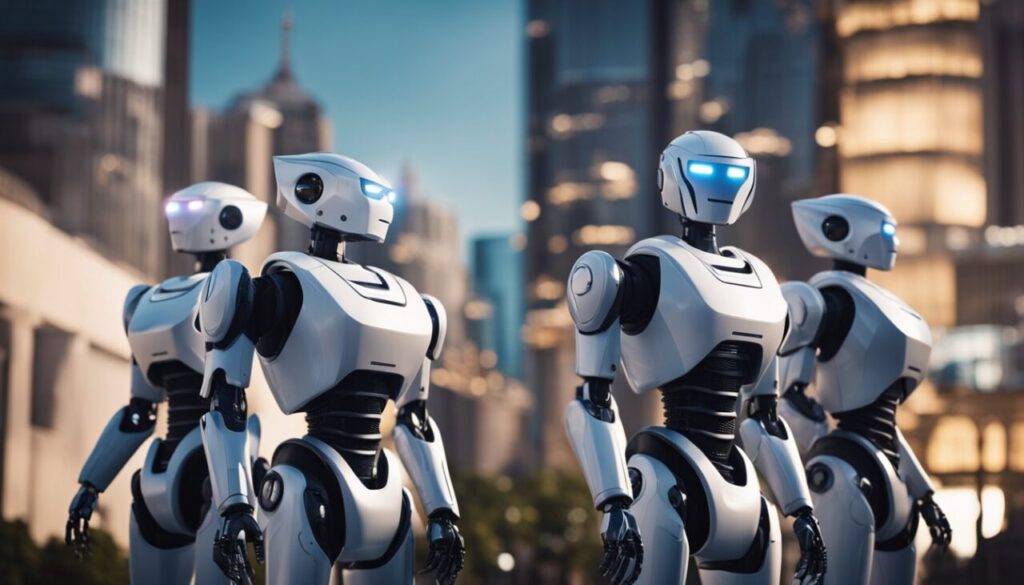
In conclusion, the development of humanoid robots has come a long way in recent years. And as technology continues to advance, we can be certain that we will see even more advanced and sophisticated robots in the future.
The top 5 futuristic humanoid robots listed in this article are just a glimpse of what is possible.
Interestingly, all of these robots have been designed to assist humans in various ways, whether it be through performing tasks or providing companionship.
As such, their potential applications are really extremely large,
However, as we discussed in our article about sex robots, ultra-advanced robots pose significant risks, particularly if they are used as love companions.
This scenario could disrupt the very fabric of our society.
Nonetheless, let’s hope it doesn’t come to that.
We should aim for ethical and moral development and usage.
But at the same time, we know that people are addictive beings. And not only that, we also know that humans will build something if they can do so.
However, in this case, perhaps society should think twice and decide against the development of some aspects of future robots.
Hint: no sexual robots perhaps?
















